10 Things to see in La Gomera
The Canary Islands are a set of landscapes that leave no room for imagination, because just walking along its cliffs, beaches and splendid sites lets you want to visit even the smallest corner of each one.
This is just what happens with La Gomera, a small place that hides in itself many surprises and a pleasant memory after you visit it.
In this article we have prepared a whole material where we will show you about the history and essence of this island and of course visit in La Gomera, so you can make a list of what to do when you dare to go to this Canarian paradise.

La Gomera, a unique island
The island of La Gomera is the second smallest island in the Canary Islands archipelago. It is an undoubted tourist place where you can enjoy your stay, if you are lucky enough to book in advance, since it does not have a large number of hotel enclosures.
The island is located in the Atlantic Ocean and belongs to the province of Santa Cruz de Tenerife and its capital is San Sebastián de La Gomera. It is an island that greatly represents the Canarian culture, since pre-Hispanic customs are preserved in every corner.
In addition to the artistic manifestations such as the dance of the drum, the chacaras and the drums, you can see in its streets, customs such as the loceras that elaborate pieces of song and wood, in addition to listening to the whistle gomero.
Each place will immerse you in its culture, as well as having unique views and cliffs that we will invite you to visit later.

Where does his name come from?
There are several theories surrounding the origin of the name "La Gomera". From the biblical and religious sphere, to the historical field, there are many assumptions that have been made about where this name came from.
Some religious attribute this name to Gomer, one of Noah's grandsons. However, other studies with a little more historical basis, claim that the name of La Gomera comes from the Berber tribes of Gomara originating in Morocco.
On the other hand, the first record where La Gomera is named, is in a Castilian cartographic study where all the islands were named in the year 1350. Later in the Atlas of Creques published in 1375, the island called "La Gomera" appears.
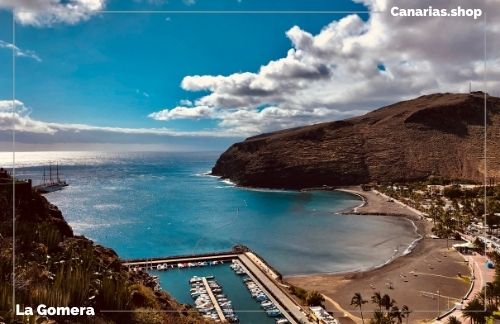
Nature of La Gomera
Despite being one of the smallest islands of the set of islands in the Canary archipelago, La Gomera has a rich and extensive list of natural resources that make it a beautiful, pleasant place with endless virtues grouped in a small place.
Below we will mention some of its natural parks and the wonderful flora and fauna found on the island.
Natural parks
Despite being one of the smallest islands of the archipelago, La Gomera has several National Parks that are part of the most visited sites by tourists, in fact you can visit them all in one day.
The most important national parks in La Gomera are the Garojanay National Park, the Torre del Conde Park and the Benchijigua Integral Nature Reserve.
The most outstanding of them, the Garojanay, is a national park that allows you to know the most important fauna and flora of La Gomera, there you can visit the forests and jungle of the island.
The Torre del Conde National Park hides within itself all the cartographic history of the island of La Gomera and also has the Torre del Conde, a military fortress considered a Historical Monument.
For its part, in the integral nature reserve of Benchijigua you will find impressive cliffs and a botanical wealth of species, some of them endemic and others in extinction.
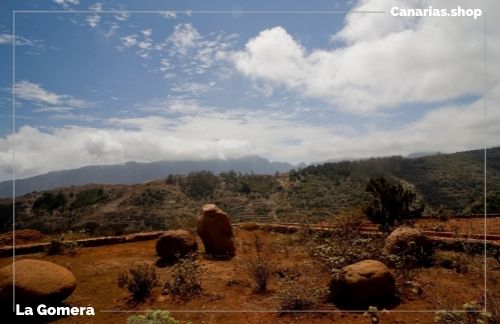
Flora and Fauna
Being an island, it is common that on the coast of La Gomera you can see seagulls, shearwaters and birds such as the Tagarote falcon, a bird very representative of the Canary Islands. It also has a species that abounds preminently, the rabbit, which inhabits the entire island thanks to the geomorphological formations that allow this species to develop.
In addition, as an interesting fact, the island has 70% of endemic species.
On the other hand, when it comes to flora, thanks to the various types of terrain throughout the island we can find very varied species. In the wettest places, for example, you can find palm trees, junipers and seedlings.
The Acebiño and the Laurel of the Azores, which is an endangered tree that can reach up to 25 meters in height.
What is the weather like in La Gomera?
Of all the islands, the climate of Gomera is one of the most pleasant. Temperatures throughout the year can vary between 18° and 25°C. This makes both visitors and natives of the island enjoy a soft and fresh air.
The lowest temperature does not exceed 17 ° C, so most of the time they are bathing temperatures, that is, it is a temperature suitable for entering the sea. On the other hand, the highest temperature reaches 28° C, ideal for enjoying wonderful beach days.
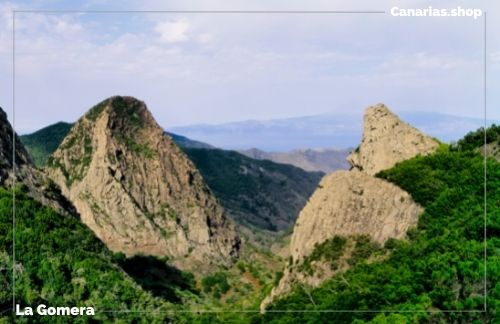
Brief History of La Gomera
It is said that La Gomera did not go through a process of conquest. At the arrival of the Europeans this island was divided into four camps inhabited by the aborigines.
Little by little, the Europeans were colonizing and the natives of the Island began to respect their authority, so the history of the island is linked to the arrival of the Peraza family and "the Elder" Fernan Peraza, who established a government on it.
After a series of events in the family and successions in the patriarchate, one of the members of the Peraza family fell in love with the daughter of one of the main aborigines of the island. These had a son, but Peraza was killed by the father of the aboriginal woman (Iballa), this caused a persecution of the conquerors towards the gomeros since they rose up against the lordship.
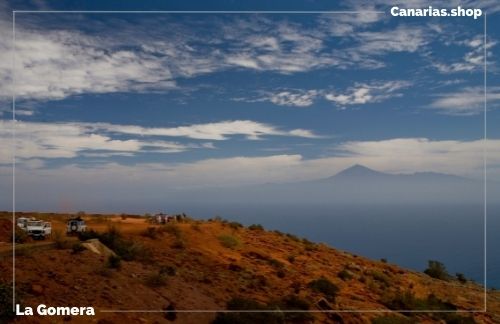
Many were imprisoned, executed or enslaved. However, the Gomeros were characterized as brave men and warriors who defended their roots.
It is recorded that Christopher Columbus stayed on this island before setting sail to conquer America.
Today, the island preserves indelible customs of the aborigines, including the whistle gomero, which is a language used by the natives to communicate over long distances.
Remember that in Canarias Shop we have the best products from the Canary Islands. If you are looking for something of these beautiful islands, this is your place.
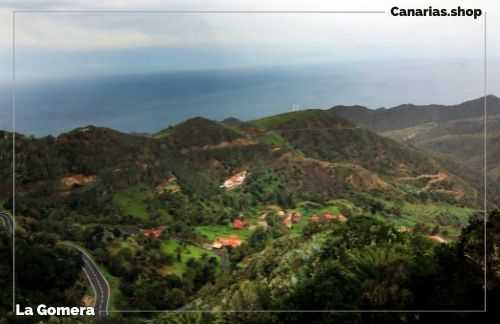
10 things to see in La Gomera
Now, the small size of this island does not indicate that there are no places where you can not stop going when you visit this beautiful Canary Island.
The Viewpoint of Abrante
One of the most spectacular attractions, it is part of a whole network of viewpoints that characterizes the island. This is undoubtedly the most striking, as it has a 360° viewpoint made of glass that makes you feel that you are flying over the island.
Beaches of La Gomera
From the beach of Vueltas to the beach of the middle, this wonderful island has a spectacular coastline where you can bathe with the freshest water and eat in one of its fabulous restaurants.
Vallehermoso
One of the places that visually will leave you hallucinating, thanks to a natural landscape full of a green that predominates between palm trees and a unique vegetation. It is a natural wonder that is part of one of the most visited areas of the island.
Garojanay National Park.
Although we named it above, this park should be part of your list of what to do on the island of La Gomera. A wonderful forest and exquisite vegetation that you could discover in more than a day of tour.
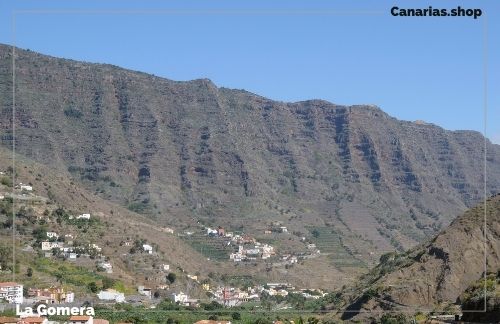
San Sebastian de La Gomera
The capital of the island, with a not very large extension but that hides a historic center that makes you understand all the cultural atmosphere of the island and that is also contracted with the small and colorful urban center.
Valley of the Great King
An environment that combines vegetation and the opportunity to enjoy a sunset of the sky of La Gomera or an incredible view of the whole area, excellent to spend some time, relax and breathe fresh air.
Chipude Fortress
A fortress that will allow you to admire one of the many aerial visits thanks to the geographical elevations of the island. It is recommended to go with a company that knows the area, as it usually has slight landslides in times of strong winds.
Enjoy the gastronomy of Gomera
Undoubtedly, the restaurants are one of the most outstanding attractions of the island, as is the case of Casa Efigênia, located in the Garojanay National Park that offers a representative menu of the Canarian culture.
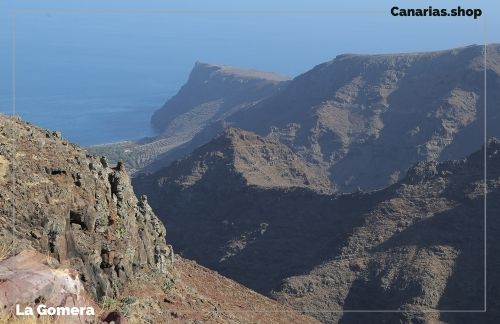
Watching the Whales on the Coast
From the Gran Rey Valley many companies offer a walk along the maritime corridor of the island that allows you to contemplate a natural spectacle where whales are the protagonists.
The Hermigua
A valley where you can enjoy walks among the vegetation, mixed with cultural experiences such as visits to the various museums that are in the Barrio de San Pedro.
